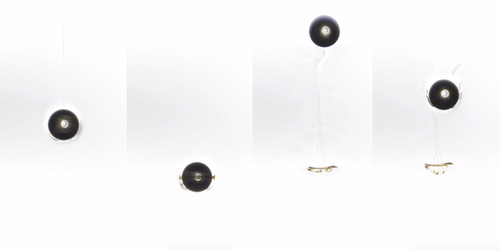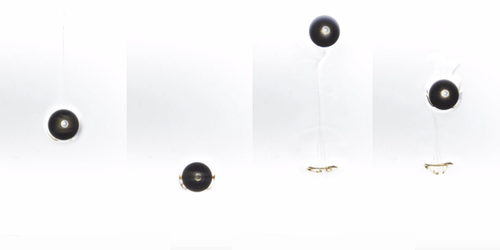Drops Bounce Inside Liquids
Bouncing an object typically requires contact with a solid surface. But Yanshen Li, from the University of Twente in the Netherlands, and colleagues now show that concentration gradients in liquids work just as well for animating drops of fluid. Li says that the finding came about by serendipity. He had been studying how oil nucleates in a water-oil-ethanol mixture that mimics the widely consumed Greek drink Ouzo—a process associated with the drink turning cloudy.
The team partly filled a tube with water and then topped it with a layer of ethanol. They dripped a drop of oil into the ethanol and watched it fall. Initially, the drop behaved as expected, sinking through the ethanol. But when the drop met the region where the ethanol mixed with the water, something unexpected occurred: the drop jumped. This cycle of sinking and jumping repeated for about 30 minutes before the drop eventually passed through the interface and continued its descent.
The bouncy behavior comes from competing fluid flows around the outside of the drop. One effect, driven by a gradient in the drop’s surface tension, builds up the ethanol concentration above the drop. This lowers the density of the fluid above the drop, pulling the drop up. The other effect, known as a “buoyancy jet,” reduces the ethanol concentration above the drop, pushing the drop down. When the buoyancy jet dominates, the drop falls. But the team found that the jet’s impact quickly diminishes as the drop plummets, causing the drop to launch up. As the ethanol-water gradient homogenizes, the flows driven by the drop’s surface tension disappear, and the bouncing halts.
This research is published in Physical Review Letters.
–Katherine Wright
Katherine Wright is a Senior Editor of Physics.





